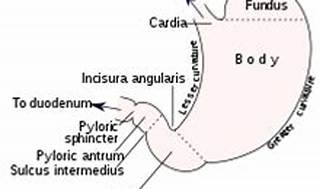After an emergency birth, the nurse encourages the woman to breastfeed her newborn.
The primary purpose of this activity is to:.
Facilitate maternal-newborn interaction.
Stimulate the uterus to contract.
Prevent neonatal hypoglycemia.
Initiate the lactation cycle.
The Correct Answer is D
Choice A rationale:
Facilitate maternal-newborn interaction. Facilitating maternal-newborn interaction is an important aspect of breastfeeding, but it is not the primary purpose of encouraging breastfeeding immediately after an emergency birth. The primary purpose is to initiate the lactation cycle, allowing the newborn to receive essential colostrum, the first milk rich in antibodies and nutrients, which aids in the development of the newborn's immune system.
Choice B rationale:
Stimulate the uterus to contract. While breastfeeding can stimulate uterine contractions due to oxytocin release, the primary purpose of encouraging breastfeeding in this context is not to contract the uterus but to initiate the lactation cycle for the newborn's benefit.
Choice C rationale:
Prevent neonatal hypoglycemia. Breastfeeding can help prevent neonatal hypoglycemia by providing the newborn with a constant supply of nutrients, but the primary purpose immediately after an emergency birth is to initiate the lactation cycle and provide colostrum, not solely to prevent hypoglycemia.
Choice D rationale:
Initiate the lactation cycle. Initiating the lactation cycle is the correct answer because breastfeeding immediately after birth helps the woman's body start producing milk and provides the newborn with colostrum, essential for their health and development. Colostrum is rich in antibodies and nutrients, offering vital protection and nourishment to the newborn.
Nursing Test Bank
Naxlex Comprehensive Predictor Exams
Related Questions
Correct Answer is A
Explanation
Choice A rationale:
The correct answer. Apnea in premature infants, characterized by pauses in breathing lasting 5 to 10 seconds, is often due to immature central respiratory centers in the brain. These episodes are termed sleep or wakeful apnea and are a common phenomenon in premature infants. The compensatory rapid respiration that follows is the body's attempt to restore oxygen levels.
Choice B rationale:
There is no indication in the scenario that the infant is experiencing severe swings in blood pressure, which would be a concerning condition that would need medical attention.
Choice C rationale:
Premature infants require a neutral thermal environment, but this condition does not cause the specific respiratory pattern described in the question.
Choice D rationale:
Correct Answer is C
Explanation

Explore
The correct answer is choice C. Visible peristalsis and weight loss.
Choice A rationale:
Abdominal rigidity and pain on palpation are not typically indicative of pyloric stenosis. These symptoms could be associated with a variety of other gastrointestinal conditions.
Choice B rationale:
A rounded abdomen and hypoactive bowel sounds are not specific to pyloric stenosis. These symptoms could be seen in various gastrointestinal disorders.
Choice C rationale:
Visible peristalsis and weight loss are classic symptoms of pyloric stenosis. The condition causes a narrowing of the opening from the stomach to the small intestine, preventing food from passing through. This leads to vomiting after feeding, persistent hunger, and weight loss since very little food passes to the small intestines.
Choice D rationale:
Distention of the lower abdomen and constipation are not typically indicative of pyloric stenosis. These symptoms could be associated with a variety of other gastrointestinal conditions.
Whether you are a student looking to ace your exams or a practicing nurse seeking to enhance your expertise , our nursing education contents will empower you with the confidence and competence to make a difference in the lives of patients and become a respected leader in the healthcare field.
Visit Naxlex, invest in your future and unlock endless possibilities with our unparalleled nursing education contents today
Report Wrong Answer on the Current Question
Do you disagree with the answer? If yes, what is your expected answer? Explain.
Kindly be descriptive with the issue you are facing.
